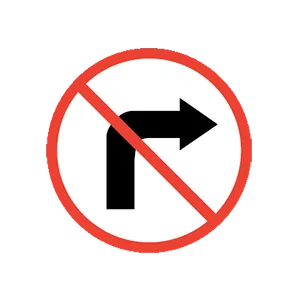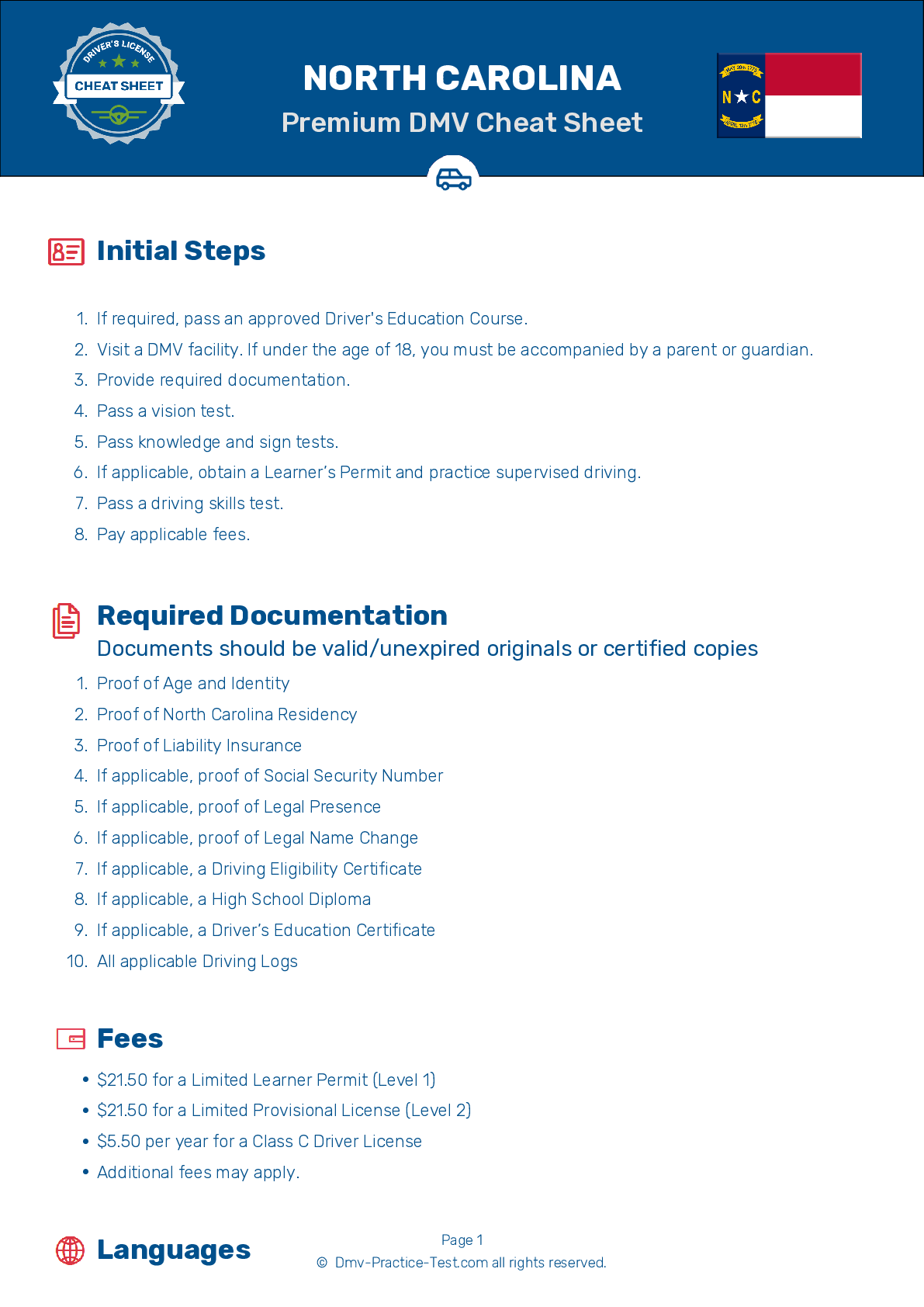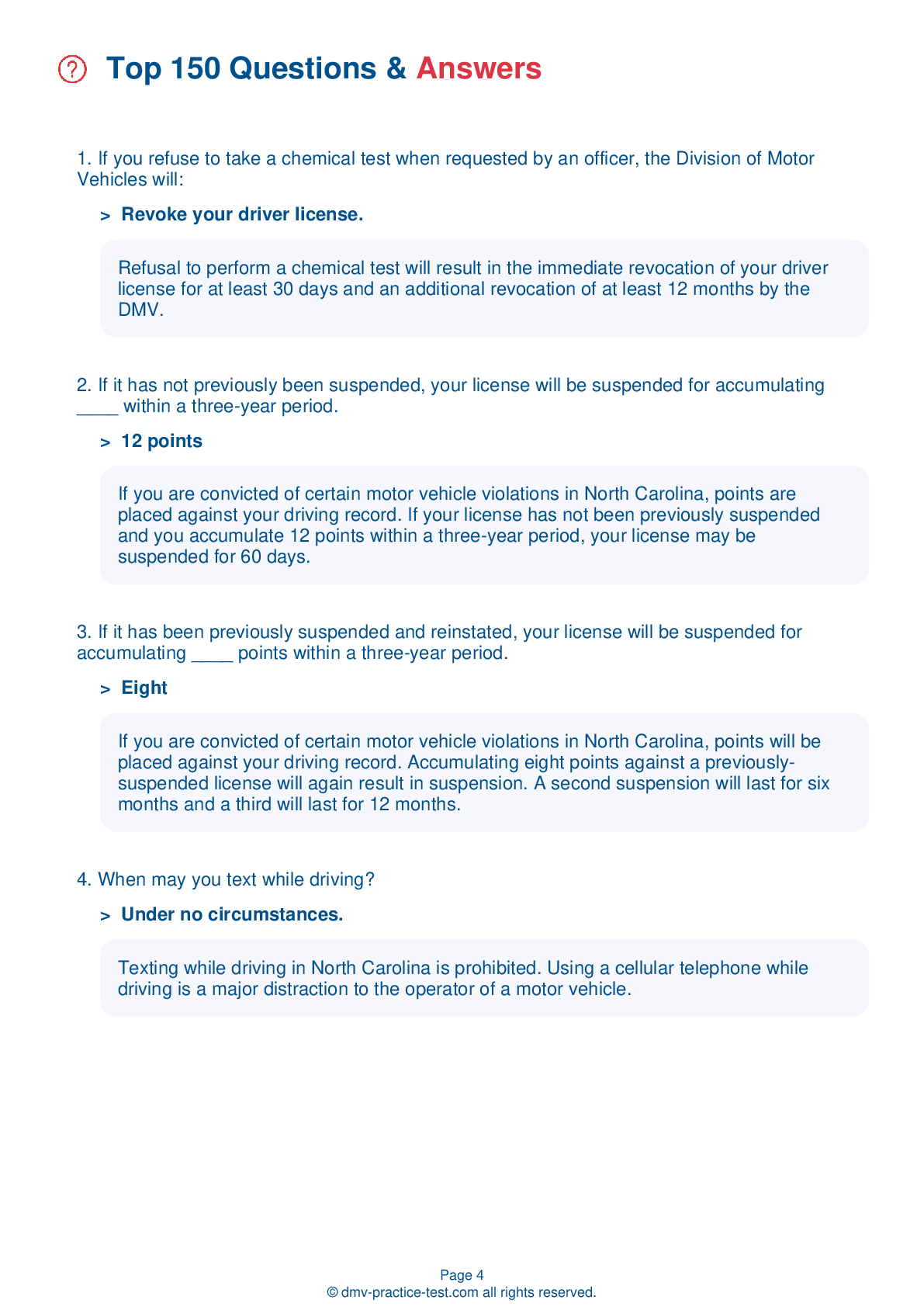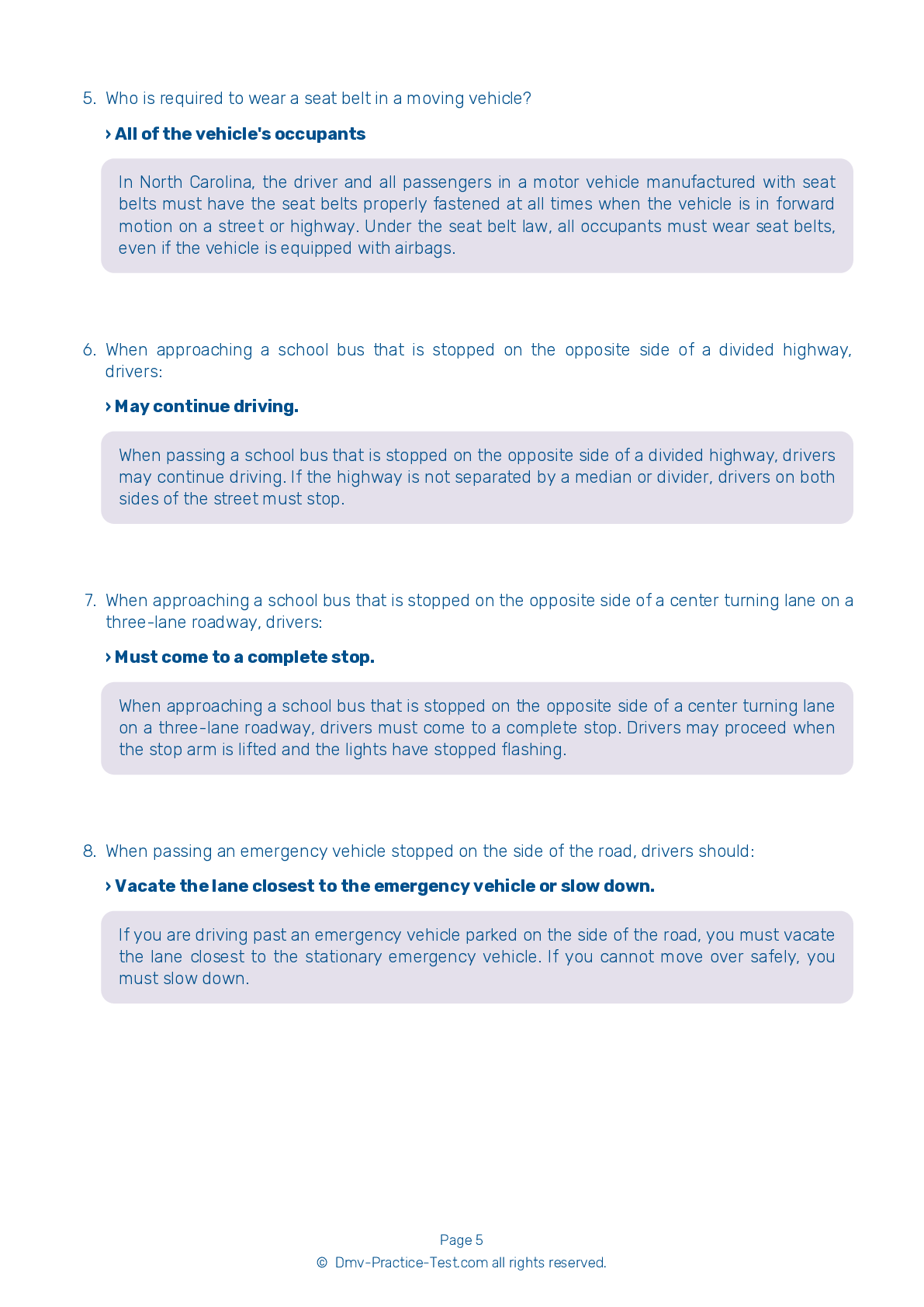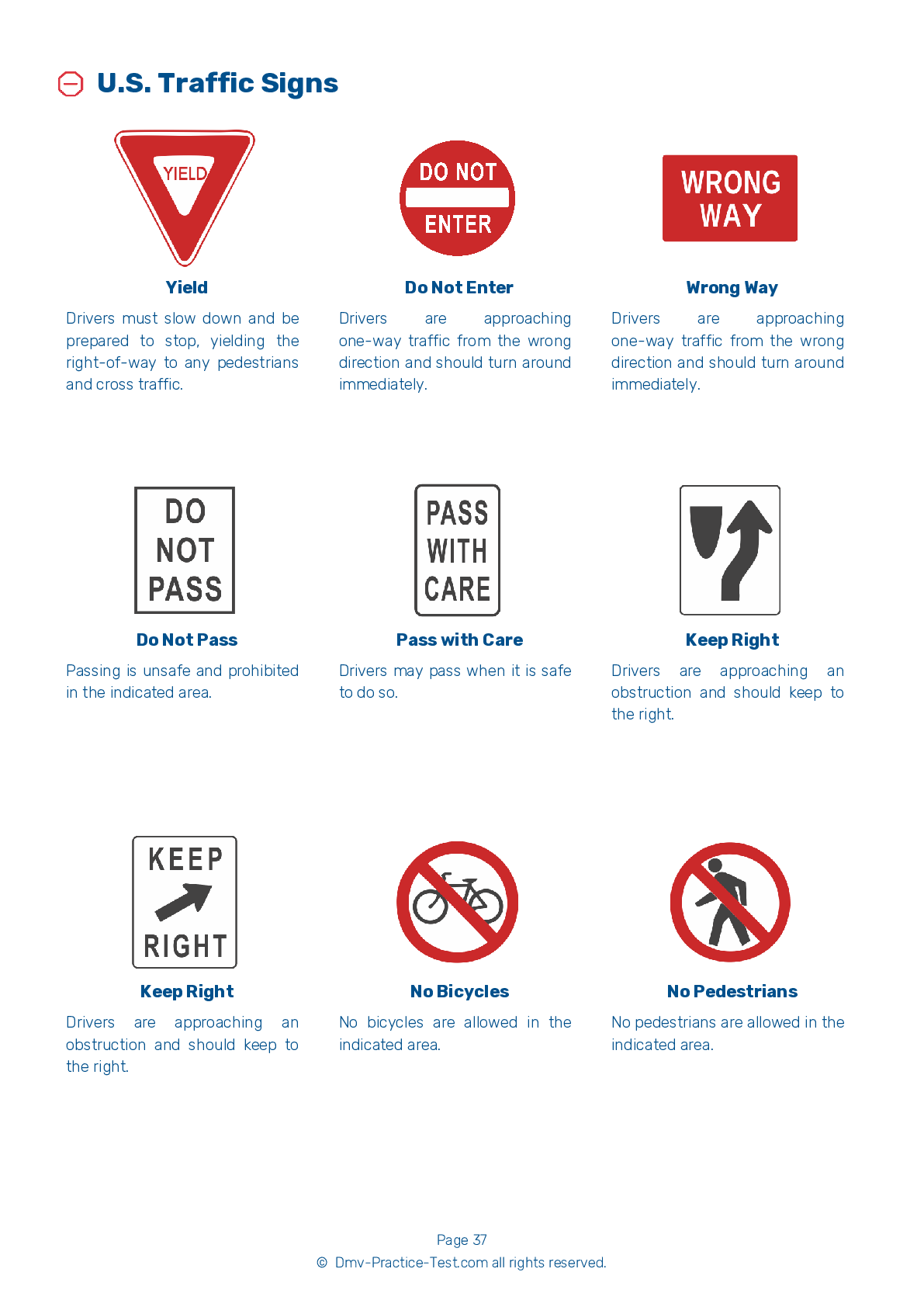FREE North Carolina DMV Practice Test #3
The DMV practise exams in North Carolina have been updated for January 2026. It includes questions based on the most important traffic signals and legislation in the North Carolina Driver Handbook for 2026. To study for the DMV driving permit test and driver's licence exam, use actual questions that are very similar (often identical!) to the DMV driving permit test and driver's licence exam.
Each question on the practise exam has a tip and explanation to help you recall the ideas. Questions about traffic rules, traffic signs, and driving statutes, as well as knowledge from the Driver Handbook, will be included in the written portion of the official North Carolina DMV test.
You must properly answer 32 of the 37 questions to receive a passing mark. To help you prepare for your instruction permit or driver's licence, take this practise test from the North Carolina Department of Motor Vehicles.
The DMV exam is offered in a variety of languages.
Using any form of testing help will result in an automatic fail, and the DMV may take further action against your driver's licence, so avoid it.
1 . This sign means:

Regulation signs regulate traffic speed and movement, displaying rules which drivers must obey. Wherever this regulation sign is posted, U-turns are not permitted.
2 . What can you do to avoid the need to make emergency stops while driving in traffic?
Keeping a safe following distance will enable you to react to an upcoming problem without the need for a emergency stop, which could cause a driver behind you to crash into the back of your vehicle.
3 . This road sign means:
